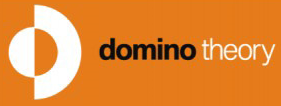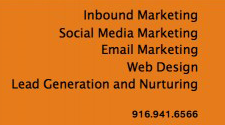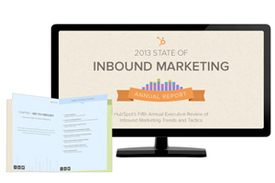
1. How many of you have a formal marketing communications plan that you follow?
About one third of the attendees in the room raised their hands.
2. How many of you who raised your hands include Internet marketing in your communications plan?
About half of the first group raised their hands.
3. How many of those include blogging and social media in their Internet communications plan?
Most of the group with hands raised kept them raised.
4. How many of you with hands still raised apply analytics to your Internet communications to measure results?
Almost all the remaining hands dropped.
5. How man of you would like to find more profitable customers?
All the hands in the room went up.
This isn't unusual among small- and mid-sized businesses. Business owners are generally very good at what they do, they are also generally not very good at marketing, and by not being good at marketing they fail to reach optimum profitability. But here's the kicker, being good at your business is exactly what Inbound Marketing is all about!
My father-in-law is retired in Arizona, but is a skilled woodworker and builds cabinets for friends and family to stay busy and make a little cash. The stuff he builds is really good (we have a number of pieces in our house here in El Dorado Hills). The woodworking he does requires special tools and special woods. So where do you think he shops? Does he go to Home Depot or does he go to specialty shops? He goes to specialty shops!
The people who work in the specialty hops are experts! They know the tools and how to use them, they know the woods and their characteristics. They are able to talk his language, share tips, and act as a resource. The people at Home Depot can tell him in what aisle he might find what he needs.
You're an expert in your business, right? Isn't that why customers come to you? You have the skills and knowledge to provide a product or service that is better than the competition. You deliver a memorable customer experience and build relationships with your customers so they continue doing business with you and refer their friends and business associates.
An Inbound Marketing plan can do all of this and more!
When you share your knowledge and expertise in blogs and social networks you establish your expertise, your role as the go-to business. It doesn't matter whether you run a restaurant, a dental practice, or any other business. Your customers want the same thing! They want access to your expertise. It's your job to share it with them!
If you're a dentist, it's as easy as including a brief message in your appointment reminder e-mails about what procedures you will be performing at the appointment and why they are important. You can include a link to more information about them so your patient shows up informed and prepared. Everyone wants to like their dentist, but I like my aunt and don't want her fingers in my mouth. I want my dentist to demonstrate expertise!
If you're a restaurant owner, the same thing applies. The most common social media posts I see from restaurants are about specials, what's for lunch, and what a great place your spot is to watch the game. People may want to know that information, but most aren't on social networks to be sold something! You need to offer more! Want customers to watch the game at your place? Tell them about that crazy AV system you had installed! Write a blog post and get into the nitty gritty, how many screens, how many games can be watched at once, how the system is networks, why it's the best! Want them eating in your restaurant? Share how you source food, your special preparation techniques, the special equipment i your kitchen that allows your chef to outperform the home cook.
But all of this takes a plan! It requires goal setting, timelines, publishing schedules, monitoring, and measurement. As a lawyer, you would never argue a case by the seat of your pants - don't market your practice by the seat of your pants either!
If you enjoyed this article and found it useful, please share it with your social networks or e-mail it to friends and colleagues using the buttons below.














